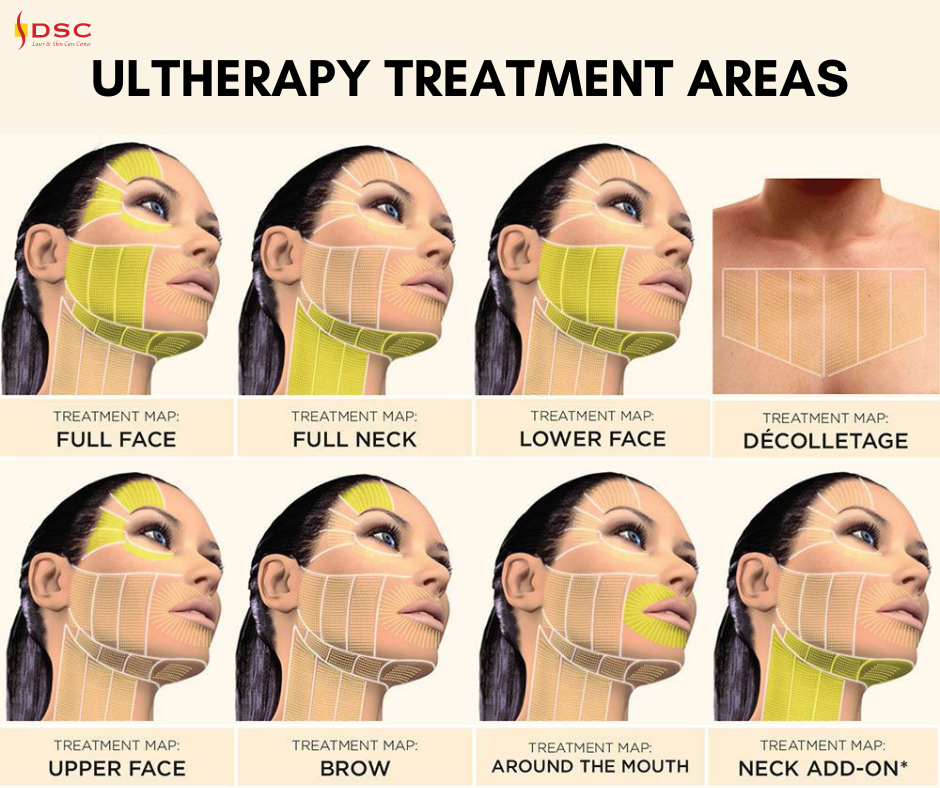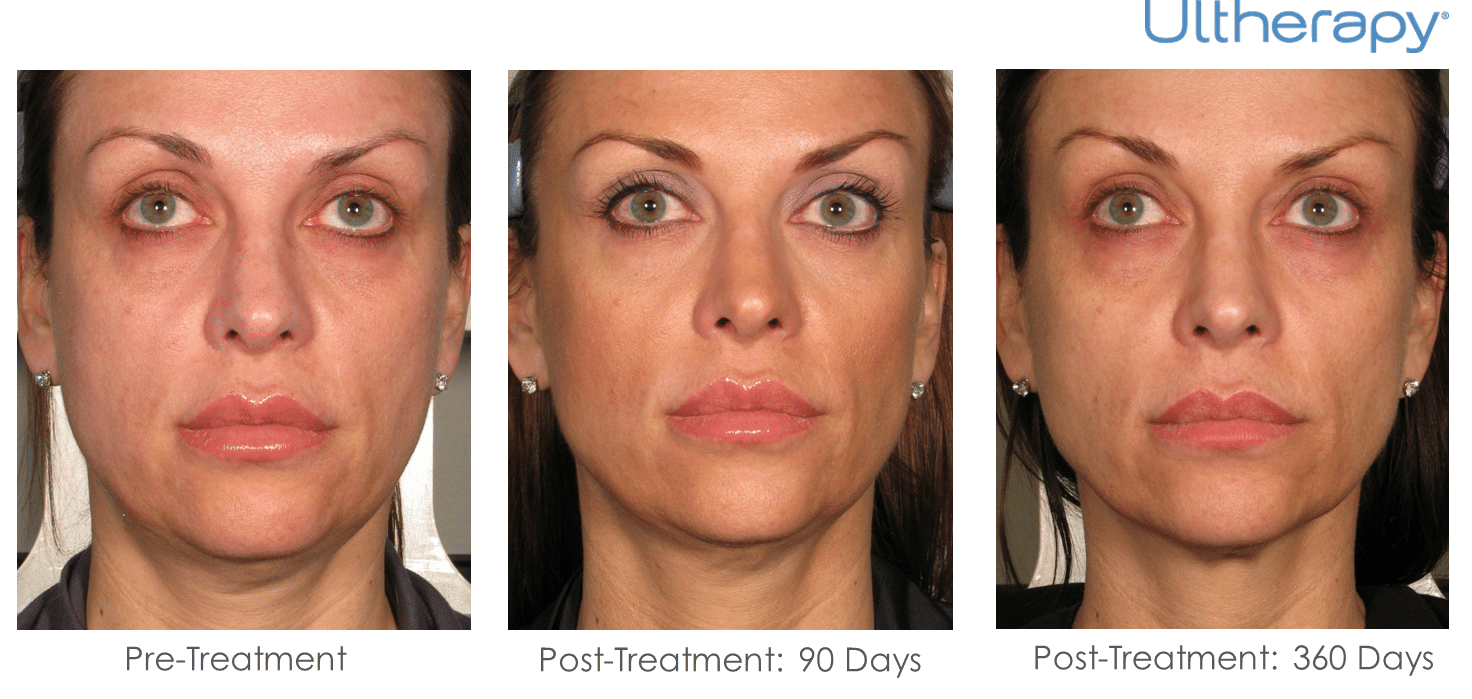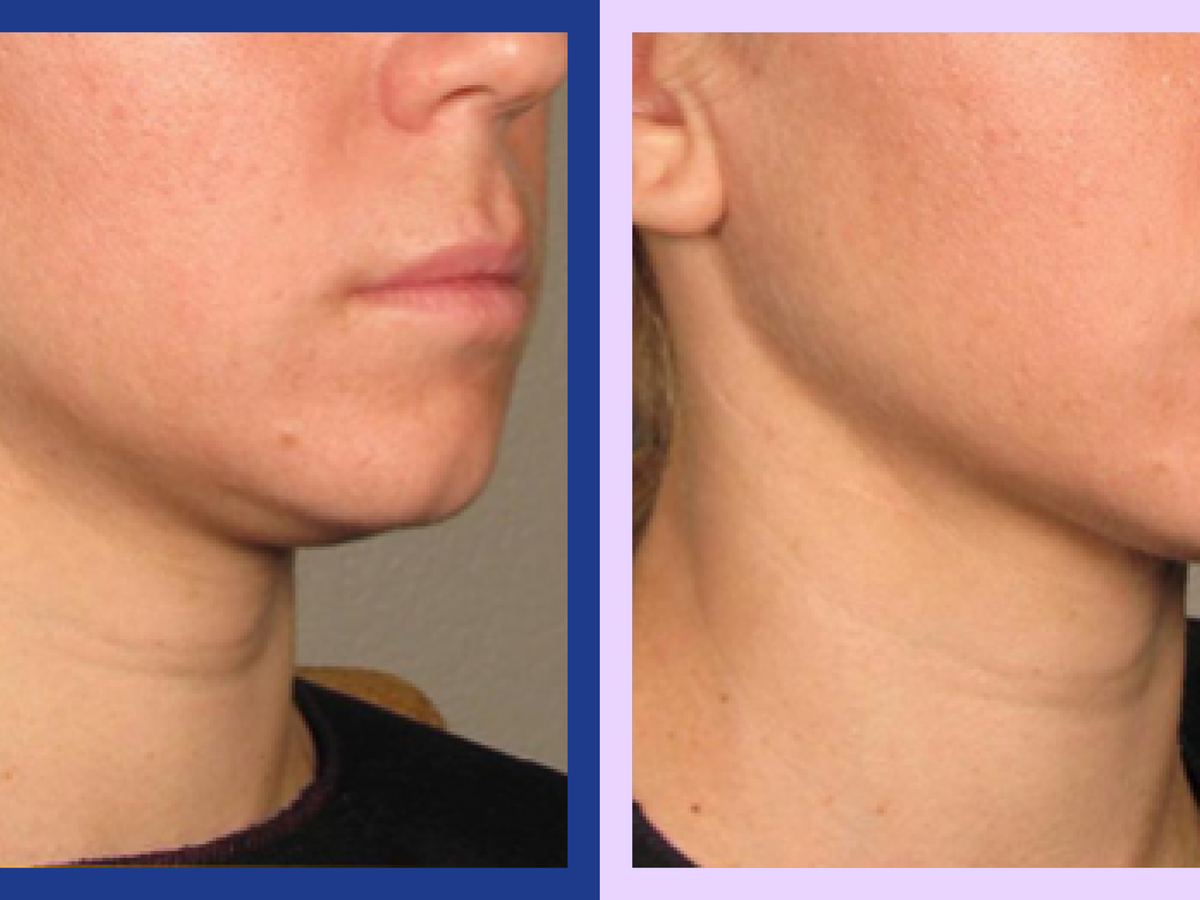Why Ultherapy Could Be Clinically Necessary: Checking Out the Reasons for a Non Surgical Lift
Ultherapy is acquiring interest as a sensible option for individuals encountering skin laxity as a result of aging or certain clinical conditions. This non-surgical therapy stimulates collagen manufacturing, offering a solution that prevents the recuperation time connected with invasive treatments. As people look for to improve not only their appearance yet likewise their general skin health, comprehending the scenarios that warrant Ultherapy's use ends up being essential. What variables contribute to its medical requirement?
Comprehending Ultherapy: What It Is and Just how It Works
Ultherapy, a non-invasive cosmetic procedure, uses ultrasound modern technology to promote collagen manufacturing and promote skin tightening. By supplying focused ultrasound energy deep into the skin, it targets the foundational layers usually resolved in surgical facelifts. This procedure urges the body's natural healing reaction, leading to gradual training and tightening up of the skin over time.

Treatment sessions typically last between 30 to 90 mins, depending on the size of the location being dealt with. While results might not be immediately visible, excellent effects normally show up within a couple of months as collagen remains to create. Ultherapy offers a compelling non-surgical alternative for people seeking skin renewal without the requirement for intrusive procedures.
The Aging Process: Impacts on Skin Elasticity and Collagen
Aging unavoidably brings adjustments that diminish skin elasticity and collagen production, causing noticeable indicators of sagging and wrinkles. As individuals age, the skin's ability to keep wetness declines, causing a drier and much less resistant surface area. Collagen, an important protein in charge of skin structure, likewise reduces, creating the skin to shed its suppleness and younger appearance. Aspects such as sunlight exposure, toxic wastes, and way of life options even more accelerate this decline in skin quality.
This loss of flexibility and collagen develops a waterfall of adjustments, consisting of the formation of jowls, deepening nasolabial folds up, and a total sagging appearance. The skin's support system weakens, making it more at risk to the results of gravity. As a result, lots of individuals look for treatments like Ultherapy to deal with these aging effects, aiming to recover a much more youthful, tight look without the need for intrusive operations.
Clinical Problems That May Take Advantage Of Ultherapy
Ultherapy is significantly recognized for its prospective benefits in attending to various medical problems. Individuals experiencing skin laxity, those in post-surgical recovery, and patients with chronic skin problems might find this non-invasive treatment useful. By stimulating collagen production, Ultherapy can improve skin suppleness and boost overall appearance for these groups.
Skin Laxity Problems
Skin laxity can be a substantial concern for individuals experiencing different clinical problems that influence the honesty and elasticity of their skin. Conditions such as Ehlers-Danlos syndrome, which disrupts collagen production, can cause early skin aging and drooping. In addition, people with autoimmune problems might experience skin adjustments that contribute to laxity. Hormone fluctuations, particularly during menopause, also play a role in decreasing skin firmness. Ultherapy, utilizing ultrasound technology, targets the deeper layers of skin, stimulating collagen production and tightening the influenced locations. This non-invasive treatment may offer a viable solution for those looking for to resolve skin laxity arising from these clinical conditions, enhancing both look and self-worth without the demand for medical intervention.
Post-Surgical Recovery Help
Post-surgical recuperation can commonly existing difficulties, particularly for people experiencing skin laxity as a result of surgical interventions. Ultherapy functions as a prospective aid in this situation, making use of ultrasound innovation to stimulate collagen manufacturing and enhance skin tightness without intrusive procedures. Patients that have undergone surgical procedures such as facelifts, liposuction, or various other body contouring procedures might find that Ultherapy boosts their healing by addressing irregular structure and laxity that can take place post-operation. This non-surgical technique can lead to boosted aesthetic end results, potentially minimizing the need for added surgical treatments. It might help ease discomfort connected with the recovery process, offering individuals a more all-inclusive recuperation experience. Consequently, Ultherapy can be a useful option in post-surgical care.
Chronic Skin Problem
For individuals experiencing from chronic skin problem such as acne scars, rosacea, or laxity due to aging, non-invasive therapies may provide considerable visit this page alleviation and improvement. Ultherapy has arised as an encouraging alternative, utilizing ultrasound innovation to promote collagen manufacturing deep within the skin. This procedure can boost skin appearance and flexibility, attending to issues like unequal skin tone and sagging. Particularly, those with rosacea may experience reduced soreness and inflammation, while people with acne scars can take advantage of improved skin smoothness and total appearance. Significantly, Ultherapy provides a non-surgical option that decreases recovery time and dangers related to invasive treatments, making it an appealing choice for people looking for effective administration of persistent skin problem.
Mental Effect of Drooping Skin and Aesthetic Issues
The psychological toll of aging often materializes in the type of drooping skin, which can greatly impact a person's self-worth and total psychological health. Lots of people connect vibrant looks with energy and beauty, causing sensations of insufficiency when encountered with noticeable indicators of aging. This perceived decline in charm can lead to social stress and anxiety, withdrawal from social communications, and a raised obsession with one's look.
People might really feel urged to seek aesthetic therapies to fight these issues, as the wish to preserve a younger appearance can become intertwined with personal identity. The emotional effects of drooping skin might additionally bring about clinical depression or a diminished quality of life. Non-surgical alternatives like Ultherapy arise as prospective services, intending not just to invigorate the skin but also to recover confidence and a positive self-image, inevitably attending to the deeper emotional implications of aging.
Comparing Ultherapy to Traditional Surgical Options
When contrasting Ultherapy to standard surgical alternatives, considerable differences arise in both cost-effectiveness and healing time. Ultherapy offers a non-invasive technique that typically results in reduced expenses and marginal downtime for people. On the other hand, medical lifts usually require even more financial investment and a prolonged recovery period.
Cost-Effectiveness of Ultherapy

Although traditional medical lifts often feature considerable upfront prices and prolonged recovery times, Ultherapy provides an engaging alternative that can supply equivalent outcomes at a portion of the price. The typical price of a surgical facelift can vary from $7,000 to $15,000, while Ultherapy therapies typically fall in between $2,000 and $4,500, relying on the location treated and supplier proficiency. Furthermore, the absence of considerable pre-operative evaluations and post-operative care connected with Ultherapy better adds to its cost-effectiveness. This approach not only reduces monetary stress yet additionally permits patients to buy other aspects of their health and wellness. By doing this, Ultherapy arises as an economically feasible alternative for those looking for face renewal without the burdens of conventional surgical treatment.
Healing Time Contrast
Healing time is a substantial consider the decision-making process for those thinking about cosmetic procedures. Ultherapy stands apart as a non-surgical option that generally requires minimal downtime. Most patients can go back to their everyday activities practically instantly, experiencing only moderate inflammation or swelling that generally solves within a couple of hours. In contrast, traditional medical choices, such as facelifts, frequently necessitate an extensive healing period. People might deal with several weeks of swelling, wounding, and restricted task, with some going back to normal regimens using up to three months. This raw difference in recovery time makes Ultherapy an enticing option for individuals seeking effective outcomes without the considerable aftercare linked with surgical treatment, enabling a smoother change back to useful site everyday life.
The Long-Term Conveniences of Non-Invasive Treatments for Skin Health And Wellness
As people increasingly seek choices to operations, the lasting benefits of non-invasive therapies for skin health come to be much more noticeable. Treatments such as Ultherapy, chemical peels, and laser treatment offer considerable advantages without the need for comprehensive healing times connected with surgery. Ultherapy Malaysia. Gradually, these non-invasive alternatives can promote collagen manufacturing, bring about firmer skin and a much more vibrant appearance
Furthermore, normal non-invasive therapies can improve skin texture, tone, and flexibility, boosting overall skin health and wellness. Individuals often experience fewer issues and adverse effects, making these procedures a lot more appealing.
Furthermore, the advancing results of regular treatments can sustain and extend aesthetic enhancements, enabling people to preserve their wanted appearance with minimal downtime. By prioritizing non-invasive techniques, individuals can accomplish long-term results while prioritizing their health and wellness and health. Ultimately, the click now long-term benefits of such techniques highlight their growing popularity in contemporary skin care.
Regularly Asked Concerns

For how long Does an Ultherapy Session Usually Take?
An Ultherapy session commonly lasts between 30 to 90 mins, depending upon the treatment location. Variables such as the individual's certain requirements and the level of the treatment can influence the total duration.

Exist Any Kind Of Adverse Effects Connected With Ultherapy?
Ultherapy can lead to negative effects such as short-lived inflammation, swelling, or tenderness in the treated location - Density RF Malaysia. While a lot of people experience very little pain, it is essential to get in touch with a professional for customized recommendations and possible reactions
How Quickly Can I See Results After Therapy?
Outcomes from Ultherapy typically begin to show up within 2 to 3 months post-treatment. The full results might proceed to create over 6 months as collagen manufacturing boosts, causing visible training and firm of the skin.
Is Ultherapy Suitable for All Skin Types?
Ultherapy is typically ideal for various skin kinds, consisting of lighter and darker tones. Individual skin conditions and problems might affect its performance, making assessments with a certified professional crucial for customized suggestions.
How Usually Should Ultherapy Treatments Be Repeated?
Ultherapy therapies are generally suggested every 6 to year, relying on specific skin problem and desired outcomes. Routine evaluations by a qualified specialist can assist determine the very best frequency for maintenance and performance.